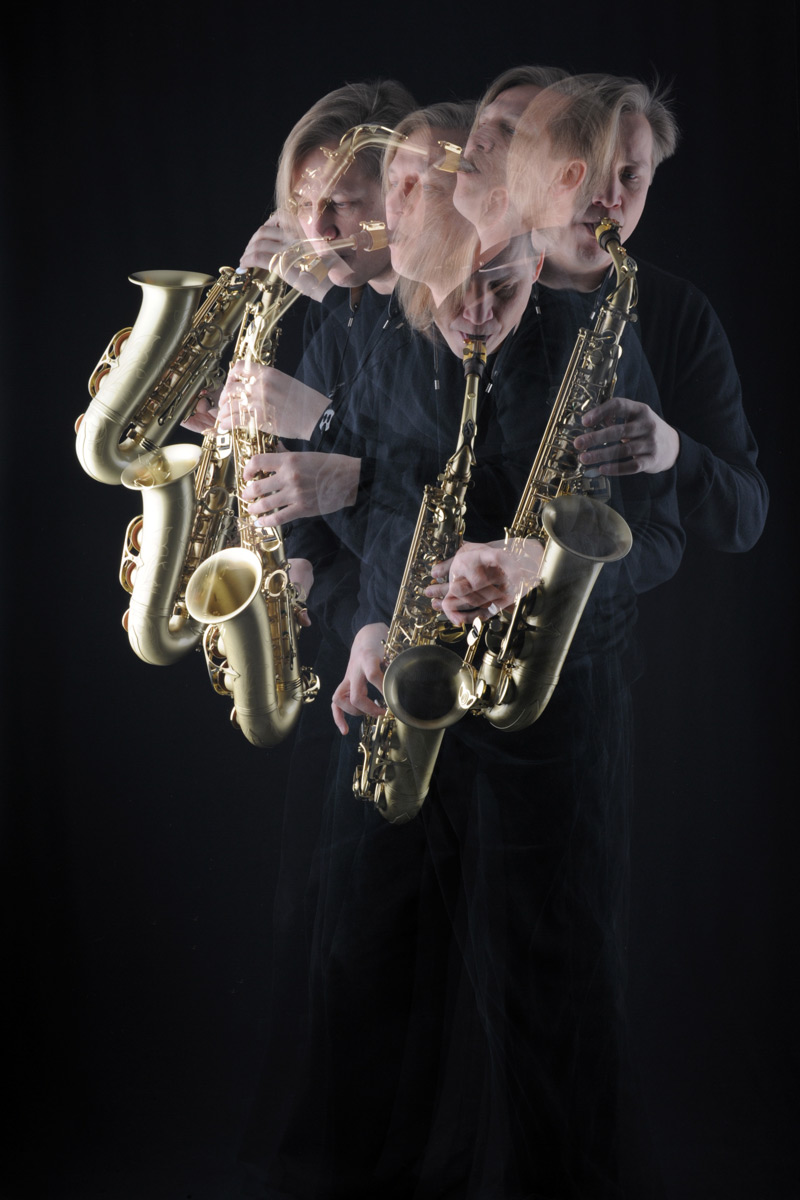Nach(t)klänge (After/Night Sounds)
The concert is played only with a saxophone. Nothing but the sound of a single instrument. Great. The special feature of the program is the original color of the solo game, with which he has successfully performed many concerts. The selected literature includes all stylistic epochs, so the repertoire includes e.g. several arranged Bach sonatas as well as modern pieces or improvisations, which were composed for this instrumentation. The palette ranges from full sonority to delicate melancholy, from meditative relaxation to virtuosity and surprising contrasts. A program compilation spanning different epochs and genres ensures concert visitors an interesting, entertaining and at the same time sustainable listening experience.
The video recording shows an improvisation for organ and saxophone, played in the St. Lorenz monastery church in Schöningen (Germany) on March 25 and 26, 2014 (Video).
Variants & Invariants - Situations for a Saxophonist
Modern music for a solo saxophone. The program includes works by G. Scelsi, L. Berio, A. Hölzsky, H. Tulve, D. Eichmann. Obviously not impressed by the common crossing of boundaries, the gentleman taps the unconventional new music format on his fresh undertones and fine expressions. And yet a basic poetic mood manifests itself that runs through all the pieces. Bystrov not only focuses on an avant-garde characterized by intellectuality, but also develops a cheerful, serene and relaxed musical atmosphere in which he can develop his melodic ingenuity and his often humorous improvisation art, which is characterized by respect for the great composers. In addition to refined interpretations of classic modernism, he also presents his own pieces: strong in substance, relaxed in melody.
(T)Raum (Dream/Room) Sequences for a musician and electronics
With his new solo program, Vlady Bystrov finds the most concentrated expression of his sound philosophy, which converges towards absolutely nothing. A multi-part, flexibly combinable composition for a musician and electronics. The opening of the musical space also takes place in the architectural concert space, because at certain times the soloist is expanded physically by a 4- to 5-part loudspeaker orchestra, which is positioned around the audience.
You can walk around in this music; the vertical perception of a whole is created, which is intended to never repeat itself in its totality, but only in its individual elements. In this way, breaks in perception are built up, interferences between the auditory and visual objects, which create the rhythm of the entire composition. It's a place to pause to think about how the world is listening to how time is. The music spread over loudspeakers is generated by digitally processing original sounds and systems for digital sound synthesis. A visual component in the form of some art videos in collaboration with a video artist is in preparation.


